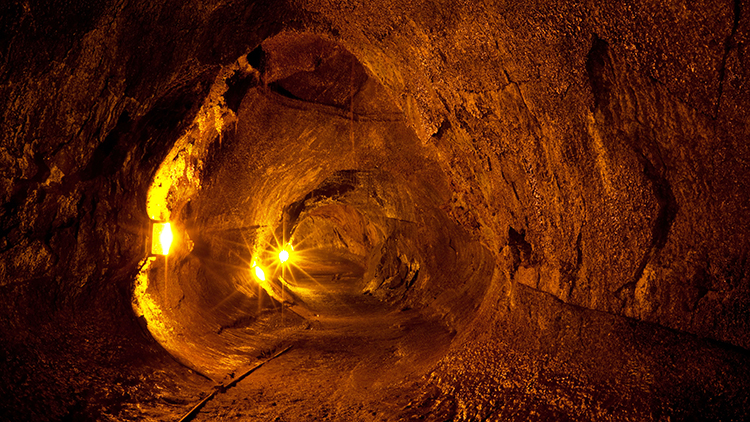
How do scientists prepare for life on other planets? They hike deep into a mountain’s lava tubes. Lava tubes might hold the key to future life on the Moon and Mars!
Lave tubes are long empty spaces created by lava flows. Lava tubes once carried flowing lava during a volcanic explosion. Once the lava flows away, it leaves a cave tunnel behind. These caves can measure up to 40 meters (130 feet) in height and width. Lava tubes are also present on our Moon and Mars. Using 3D lasers scans, researchers estimate that Mars’ lava tubes are about 80 times larger than the ones on Earth. These caves are even larger on the Moon, ranging between 500 to 900 meters (1,600 to 3,000 feet) in diameter. This size could easily contain a small city. Lava tubes that are extraterrestrial, from outside the Earth or its atmosphere, are likely to contain chemicals that can be used as fuel, as well as ice water.
Researchers are now exploring lava tubes at Mauna Loa in Hawaii. They have been running missions since 2018. During these missions, a team of no more than six members perform research wearing protective suits, helmets, and life support to practice for space exploration. Many things could go wrong in space. That is why it is important for researchers to practice here on Earth.
Lava tubes provide an opportunity to mimic the harsh conditions on other planets. Scientists hope to one day live in lunar lava tubes. On Mars, scientists hope to find evidence of life inside these caves.
What Do You Think? Why is it important for scientists to practice researching in harsh environments? What might we find inside extraterrestrial lava tubes?
Reading Response Click on this link to respond to your reading. Print out the response page or upload it to your classroom site.
Photo Credit: Galyna Andrushko/Alamy Stock Photo



